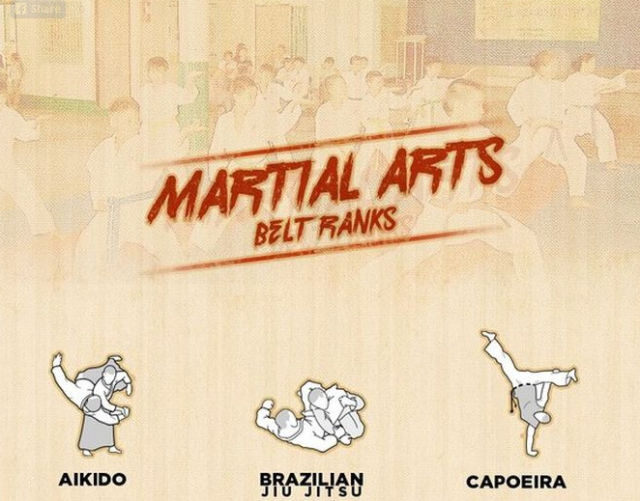Embark On An Awesome Experience With The Realm Of Martial Arts
Embark On An Awesome Experience With The Realm Of Martial Arts
Blog Article
Web Content Writer-Fyhn Francis
Step into the ancient world where martial arts were born out of necessity in varied regions. Societies crafted one-of-a-kind combating styles intertwined with historic contexts. Techniques progressed over centuries through dedicated practice and social exchanges. Today, contemporary martial arts mix conventional components for maximum efficiency. Philosophically, martial arts emphasize self-control, self-improvement, and consistency. Respect, humbleness, and equilibrium are foundational principles leading practitioners in the direction of development and strength. Discover the midsts of this abundant history and viewpoint to uncover the extensive impacts shaping this long-lasting technique.
Beginnings of Martial Arts
Martial arts came from numerous areas worldwide, developing as practical battle systems to resist risks. These ancient fighting styles were developed out of need, with each culture crafting techniques matched to their special settings and challenges. From the grappling arts of Jujutsu in Japan to the striking methods of Martial art in China, martial arts were deeply linked with the historical, social, and cultural textile of their particular cultures.
In Japan, the samurai course refined martial arts like Kenjutsu, the art of the sword, which later progressed right into the more promoted kind of Kendo. At the same time, in Brazil, Capoeira emerged as a mix of dance and combat, produced by enslaved Africans as a means to resist fascism. Each fighting style brings with it an abundant background and approach, reflecting the worths and ideas of the people that exercised them.
As you explore the origins of martial arts, you uncover a tapestry of human resourcefulness, resilience, and the stubborn spirit of warriors throughout time.
Evolution of Strategies
Through centuries of technique and refinement, battle techniques within numerous martial arts have undergone an extensive evolution. From old designs like Martial art and Martial arts to much more modern self-controls such as Brazilian Jiu-Jitsu and Krav Maga, the evolution of methods has actually been driven by a mix of cultural impacts, practical applications, and technical advancements.
https://travisthsdp.ziblogs.com/30291668/understand-why-fighting-styles-is-a-fantastic-sporting-activity-for-youngsters-boost-their-self-confidence-enhance-discipline-and-enhance-self-defense-abilities-take-advantage-of-their-potential-now of this development is the cross-pollination of methods between various martial arts. As an example, techniques from traditional Japanese Jiu-Jitsu were included into the production of Judo by Jigoro Kano in the late 19th century. This mixing of styles has caused the advancement of hybrid martial arts like Mixed Martial Arts (MIXED MARTIAL ARTS), which incorporate components of striking, grappling, and submission techniques.
Furthermore, the advancement of techniques has been shaped by the raising emphasis on effectiveness and efficiency in fight. Experts have actually constantly looked for to improve their strategies through extensive training, trial and error, and competitors, resulting in the development of very specialized and effective fighting styles. On the whole, the development of techniques in martial arts mirrors the vibrant nature of combat and the continuous quest for improvement and innovation.
Thoughtful Structures
Checking out the underlying philosophical concepts of martial arts offers understanding into their core worths and guiding ideas. At the heart of many martial arts disciplines is the concept of discipline itself. By training https://www.businessinsider.com/mark-zuckerberg-jiu-jitsu-mma-meta-beaten-up-2023-6 and mind to serve as one cohesive system, you cultivate technique that expands past the dojo or fitness center right into day-to-day life. This discipline encompasses regard, humility, and self-constraint, shaping not simply your physical abilities but likewise your character.
Another fundamental philosophical structure in martial arts is the idea of continuous self-improvement. The trip of grasping a martial art is never-ending, with specialists continuously aiming to far better themselves, both physically and emotionally. This focus on development cultivates resilience, willpower, and a development attitude that can be related to all elements of life.
Furthermore, martial arts stress the significance of harmony and balance. Strategies are designed to make use of a challenger's power against them, highlighting the concept of yielding and rerouting force instead of satisfying it head-on. This approach encompasses social partnerships, promoting relaxed resolutions and mutual understanding. By accepting these thoughtful structures, martial artists not only enhance their combat abilities yet additionally grow a way of living fixated individual growth, regard, and consistency.
Final thought
Finally, the background and approach of martial arts supply an abundant tapestry of practice, technique, and self-improvement.
Consider instance the story of Bruce Lee, that revolutionized martial arts by mixing different designs and philosophies to develop his own special kind of Jeet Kune Do.
With devotion and innovation, martial artists continue to press limits and influence others to reach their complete potential both in combat and in life.
